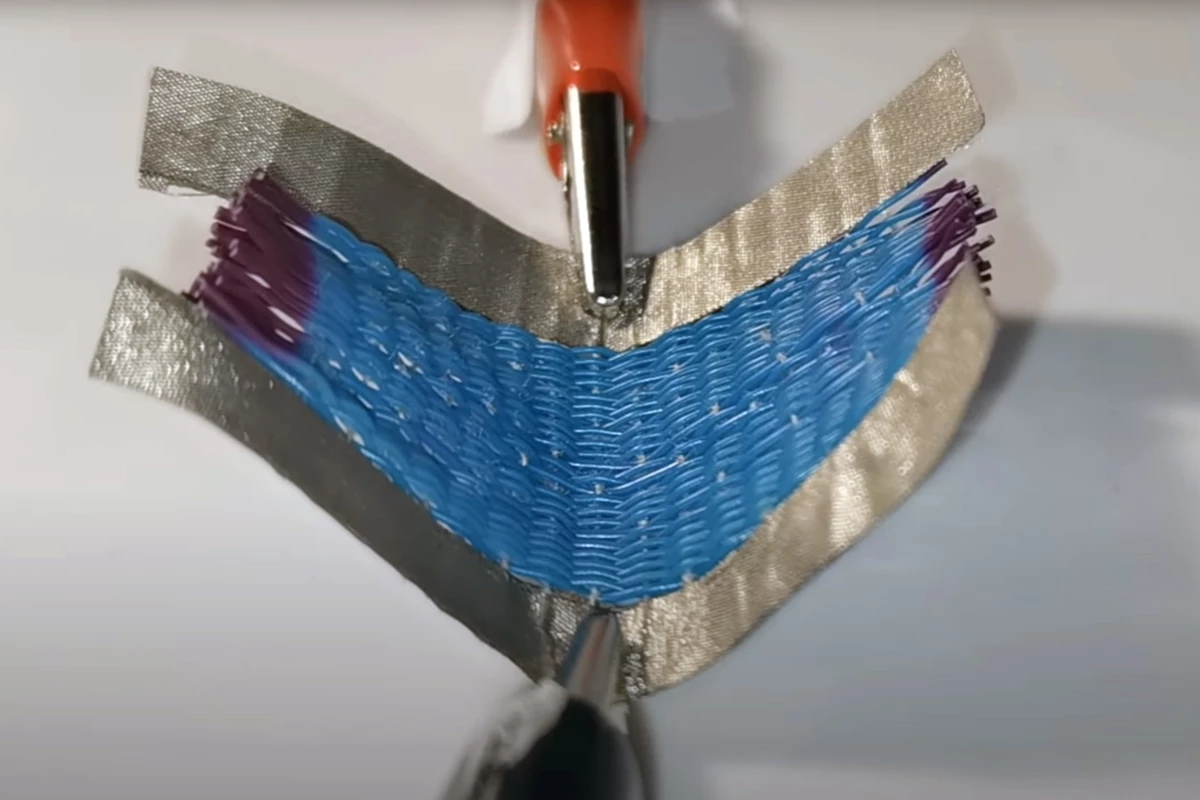UK researchers have created the first smart fabric that can change shape and color in response to two different stimuli: heat and electricity. The development opens up new possibilities in various fields, including virtual reality and robotics.
Stimuli-responsive materials (SRMs) react to the presence of or changes in external stimuli such as light, temperature, magnetic fields, or electricity. Being exposed to these stimuli causes the SRM to change its shape, molecular makeup or mechanical properties.
Until now, research has focused on how SRMs respond in one way, either by changing shape or color. But for SRMs to be a truly effective part of smart systems such as camouflage, bionics, and sensors, they need to be able to react to multiple stimuli. That’s where researchers from the University of Waterloo stepped in, creating the first smart fabric to change color and shape in response to multiple stimuli.
Using a device similar to a traditional loom, the researchers wove together polyethylene terephthalate (PET) and thermochromic microcapsules (TMC) on the weft with blended yarns made of stainless-steel fibers and PET on the warp. The stainless-steel fibers gave the fabric its electrical properties, whereas the PET provided shape memory.
The interweaving structure of the smart fabric means that it’s strong and supportive yet flexible and soft like ordinary fabric and can be bent without unravelling.
Using a hairdryer to heat the fabric, the researchers found that it uniformly changed color from purple to blue when the temperature was increased from 68 °F (20 °C) to 140 °F (60 °C). When the heat was removed, it quickly returned to its original purple color.
When the fabric was heated using electricity it produced the same color change and changed shape, reverting to its original shape when the electricity was switched off. The researchers could selectively activate the fabric by applying electricity to specific parts of it.
Moreover, the fabric was activated by a low voltage (5 V over 20 seconds), lower than previous systems. The lower voltage, say the researchers, means that the fabric can be used in smaller portable devices such as biomedical devices and environmental sensors.
“Through the ability to sense and react to environmental stimuli such as temperature, this is proof of concept that our new material can interact with the environment to monitor ecosystems without damaging them,” said Milad Kamkar, a corresponding author of the study.
Given its cost-effectiveness – the polymers used were from recycled plastic – the researchers see great promise in their novel smart fabric.
“As a wearable material alone, it has almost infinite potential in AI, robotics and virtual reality games and experiences,” Kamkar said. “Imagine feeling warmth or a physical trigger eliciting a more in-depth adventure in the virtual world.”
The researchers plan to improve upon the fabric’s shape memory to make it applicable to the field of robotics.
The study was published in the journal Small., and the below video, made by the Multiscale Materials Design lab at the University of Waterloo, shows how the smart material changes color and shape in response to both electricity and heat.
Source: University of Waterloo





